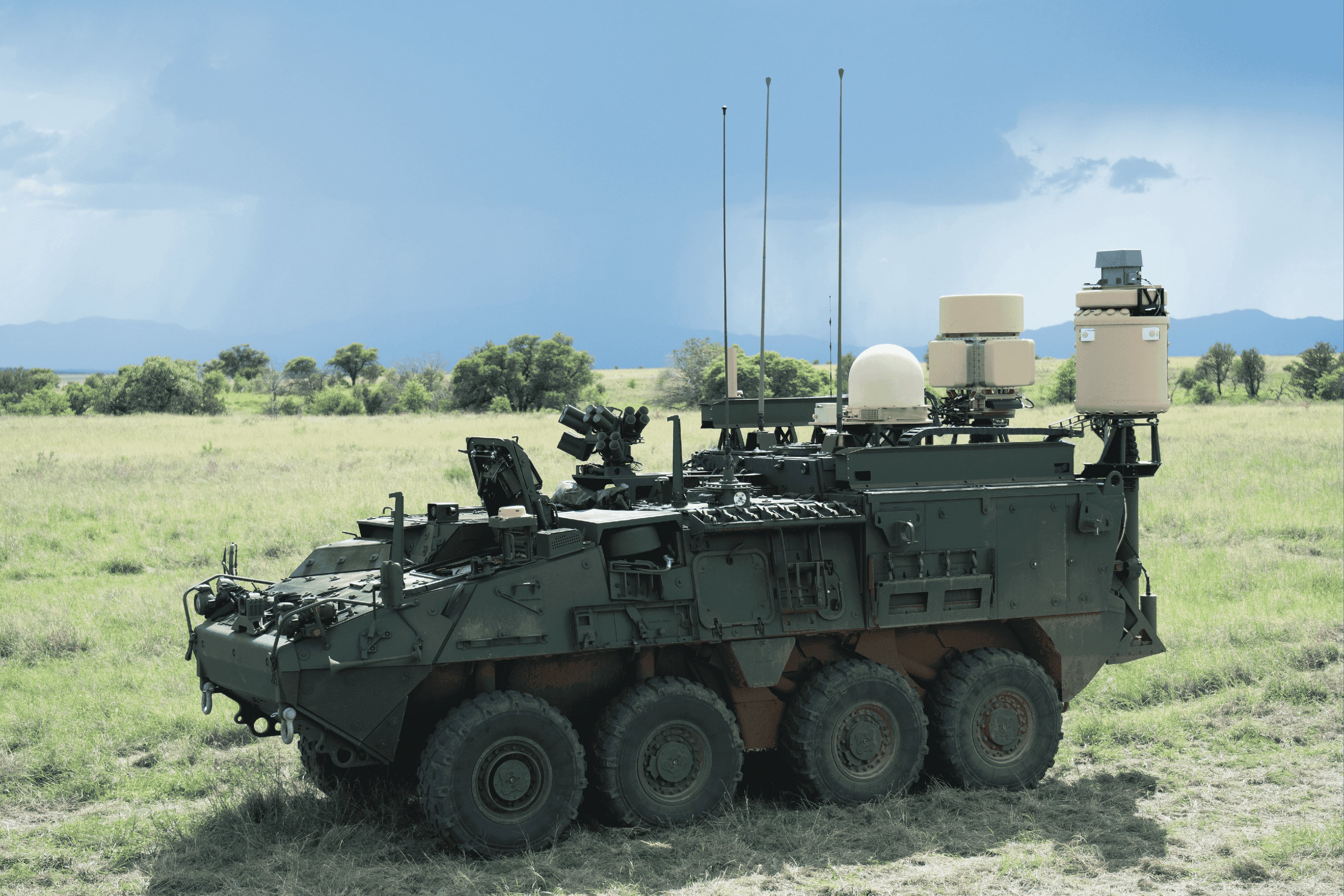WASHINGTON — The U.S. Army is assembling a family of systems to provide soldiers with electronic warfare, signals intelligence and cyber capabilities that they can employ from near and far, on the ground and in the air.
The projects — essentially siblings — are known as the Terrestrial Layer System-Brigade Combat Team, TLS-BCT; the Terrestrial Layer System-Echelons Above Brigade, TLS-EAB; and the Multi-Function Electronic Warfare-Air Large, or MFEW-AL.
Each serves its own purpose and is in its own stage of development. But what Army and industry officials emphasize is their future synergy: how each piece fits neatly into the puzzle of electromagnetic spectrum domination.
“We don’t expect these systems to do their own mission; they have to be used in tandem, whether we’re using an MFEW-Air Large in the air to get range [or] looking at long-range precision fires with [TLS-EAB],” William Utroska, who works with the Army’s Program Executive Office Intelligence, Electronic Warfare and Sensors, told reporters in August at Aberdeen Proving Ground, Maryland.
“That’s one of the points I wanted to make upfront,” he said. “We foresee these systems being mutual, used in tandem, in order to provide the commander the best effects.”
Electronic warfare is a fight for control of the spectrum, which militaries use for situational awareness, communications, weapons guidance and more. This contest is increasingly important as more advanced technologies are deployed on the battlefield and troops try to minimize their signatures to avoid detection.
The Army in July awarded Lockheed Martin a $58.8 million contract for TLS-BCT. The other transaction authority agreement runs through October 2023. The company is expected to provide prototypes mounted to Stryker combat vehicles that are ready for operational assessment and issuance to an initial unit.
“It’s really an exciting time for TLS-BCT,” Maj. Derek Vanino, an assistant product manager with the terrestrial spectrum warfare portfolio at PEO IEW&S, said during an August roundtable. “We’ve made a lot of progress with our industry partner.”
The service in August inked separate deals with Lockheed and General Dynamics Mission Systems for TLS-EAB concepts and demonstrations. The first phase is valued at $15 million over 11 months.
Compared to its TLS-BCT relative, TLS-EAB is meant to reach farther and interface with larger footprints and formations.
“We’re going to be designed to deliver long-range sense and effect, integrated SIGINT, EW and radio frequency-enabled cyber. But we’re going to do it at longer range and at echelons that do not have that capability organically at this time: division, corps and theater,” Maj. Joseph Fink, also an assistant product manager with the terrestrial spectrum warfare portfolio, said at the same event. “We also have different target sets. We have different signals of interest at each echelon. And those are being developed in real time.”
The self-contained MFEW-AL pod is also produced by Lockheed. It was intended for mounting on an MQ-1C Gray Eagle drone. The pod garnered the applause of Army Under Secretary Gabe Camarillo, who observed a prototype in the field this summer, courtesy of PEO IEW&S.
Together, the three systems are expected to boost soldier situational awareness and efficacy in future fights, potentially against technologically savvy opponents such as China and Russia.
“What’s important about this is all three programs have been architected to cooperate,” Deon Viergutz, vice president of spectrum convergence at Lockheed, said in a Sept. 26 interview. “Think about it on a battlefield: They’re part of an integrated, networked family of systems.”
Among other factors, Viergutz credits a shared approach for the success of each endeavor thus far. Rapidly upgradable and flexible equipment is important to the Army, according to service officials.
“What has enabled it is a common architecture, hardware and software,” Viergutz said. “And that’s what really lays the groundwork for the Army to be able to actually achieve these programs as part of a family of systems.”
Colin Demarest was a reporter at C4ISRNET, where he covered military networks, cyber and IT. Colin had previously covered the Department of Energy and its National Nuclear Security Administration — namely Cold War cleanup and nuclear weapons development — for a daily newspaper in South Carolina. Colin is also an award-winning photographer.








